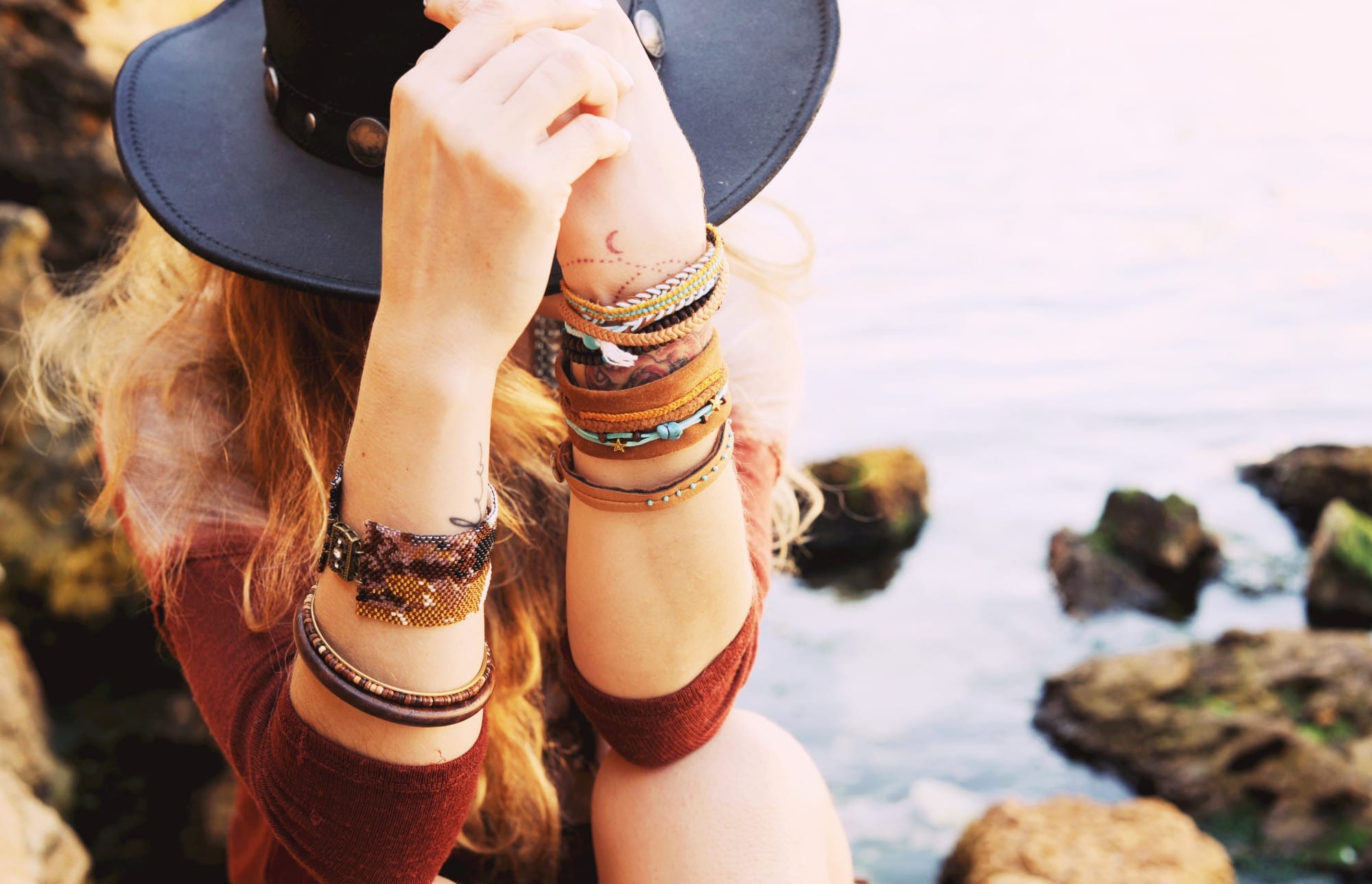Accessorizing is the key to the perfect outfit – and it should be comfortable. Unlike those dangly earrings that look so cute, but make you feel like your ear is going to fall off every time you move your head.
Bracelets and necklaces come in standard sizes, but not everyone is standard. If you’re worried about if it will fit or not, you need to know how to measure your wrist size.
We’ve got multiple techniques and sizing advice, below.
How to Measure Your Wrist Size at Home
The best way to measure your wrist is with a flexible measuring tape, like the kind you’d use for sewing. Not the metal kind that you use for construction or housework!
If you use the metal type, not only will it be uncomfortable, but since the metal doesn’t bend well, you won’t get the most accurate reading.
To start measuring your wrist, locate your measuring tape. If you don’t have one, you can find them at the grocery store or big-box store by the sewing supplies (or in the household aisle).
You may want to get someone to help you since it can be hard to hold the tape in place and wrap it around your wrist at the same time.
Hold the start of the measuring tape right in the middle of your wrist, holding it down with a finger. You can tape it if you’d like, but beware the tape will stick to those delicate baby hairs.
Then, wrap the tape around your wrist, surpassing the beginning of the tape to the one-inch mark. Read the number and DO NOT subtract one inch.
Why Measure an Inch Extra?
You don’t want to wear a bracelet that’s exactly the size of your wrist. It’ll be hard to clasp and it’ll dig into your skin as you bend your wrist at different angles.
That one-inch margin (or a 1/2 inch if you like a tighter fit) will give you some wiggle room.
Different types of bracelets (and their materials) require different types of fit.
For example, if you’re ordering a bangle (or any other bracelet without a clasp) you want to go up at least an inch if not an inch and a half. You still need to fit the bracelet over the knuckles of your hand!
Plus, some people say the correct placement of bangles is actually up to your forearm, under your elbow – so the extra inches make that possible.
Measuring Your Wrist Size Without a Measuring Tape?
Let’s say you have to order a bracelet right now and you don’t have a measuring tape. You do, however, have a rule or one of those metal construction tapes.
You can work with that! What you’ll want to do is get a sheet of printer paper, and cut a strip of it, longways. This should fit around your wrist since it’s 11 inches (the standard 8×11 paper).
Use the same process you would with the fabric measuring tape, but measure out an inch at the beginning of the paper first, so you know where to stop.
Bend or mark where the two ends of the paper meet on your wrist.
Then, take that piece of paper and line it up with your ruler or your metal measuring tape. Compare the lengths and voila – you have your wrist circumference!
You can do the same thing with a piece of string or a ribbon – just make sure if the fabric has any stretch in it, you’re not pulling too hard (and therefore getting a too-small reading).
Different Clasps = Different Lengths
There are more than 10 different types of clasps, not including custom silicone bracelets that don’t clasp at all.
Different types of bracelet clasps need different lengths to work with.
Most bracelets you’ll get have either a “spring ring” clasp, an S-hook clasp, a toggle, or a fishhook. You can buy these bracelets true-to-wrist-size since the manufacturer adds some material to attach each part of the clasp to the bracelet.
The ones you have to watch out for are “box tab insert” clasp and “fold-over” or “ladder clasps”. Those can only close at one length – ever and there isn’t any wiggle room.
Luckily, these types of clasps are more common on antique jewelry rather than anything you’d find in a modern store.
But if you’ve inherited a piece with one or you find one you fall in love with at a vintage shop, take it to your local jeweler. They may be able to put a space in, to help the bracelet fit your wrist.
Flexible Material Bracelets
Do you remember in the early 2000s, when the Livestrong yellow bracelets first came out? That was back when Lance Armstrong, the famous biker, was fighting testicular cancer.
It seemed like everyone had one overnight – and if you didn’t, you were behind.
Not very long after, you could get the same kind of silicone bracelet for any cause you wanted – for cheap. They were something like $2 each, with half the profits going to your chosen cause.
They came in any color you can imagine and either had printed-on words, or words imprinted into the silicone.
Even though that was 10+ years ago, people still wear and sell those bracelets today.
We see them still for fundraising reasons, and they’ve gained popularity as bracelets “in memoriam” of someone who passed to young or of chronic disease.
Anyone can design a set if they’d like, and they’re relatively cheap.
Pro tip- it’s not comfortable to take out, but they work as hair elastics in a pinch!
The Perfect Wrist-Fit
Now that you know how to measure your wrist size, you can buy bracelets with confidence. Trying them on in-person is always preferable, but if you’re ordering online, now you have a baseline number to go by.
For more helpful lifestyle tips like this one, browse our blog categories above.







